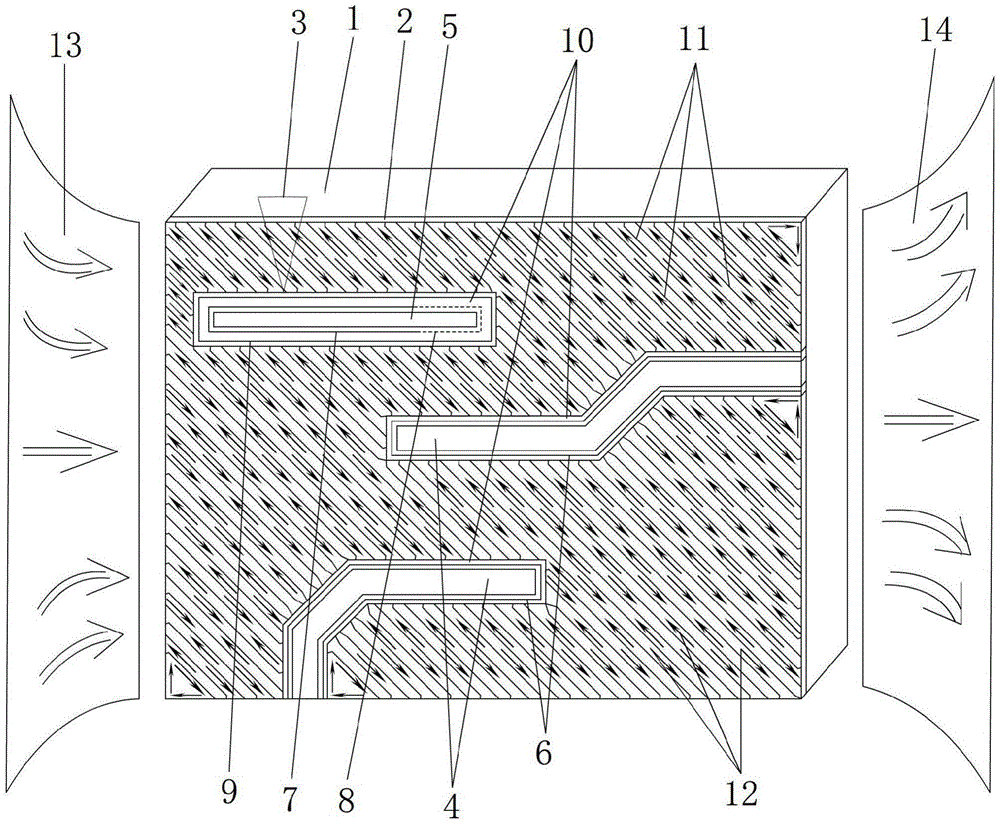A method of making conductive patterns on metal foil-clad insulating substrates
A technology of insulating substrates and conductive patterns, which is applied in metal processing, metal processing equipment, and removal of conductive materials through light. The circuit structure is simple and fast, reducing oxidation and burns, and avoiding the effects of oxidation and burns
- Summary
- Abstract
- Description
- Claims
- Application Information
AI Technical Summary
Problems solved by technology
Method used
Image
Examples
Embodiment
[0062] In this example, the substrate material is FR4 copper-clad laminate, using CircuitCAM V7.0 or above or DCT-DreamCreaTor software to process the data to be processed, and using DCT-DL500 laser equipment for processing.
[0063] A method for making a conductive pattern on a metal-foil-clad insulating substrate, selectively removing the metal foil layer on the substrate material according to the design requirements, and forming a predetermined conductive pattern. In the method, the insulating channel path, the separation path and the heating path are as follows: figure 1 As shown, wherein, 1 is an insulating substrate material, and 2 is a metal metal foil layer, which is covered on the substrate material, and the operation steps are:
[0064] Step (1): Under the condition that the dust collection device 14 is turned on and the inert gas delivery device 13 is turned on, use a laser to process an insulating channel on the outer edge of the metal foil layer to be retained;
...
PUM
| Property | Measurement | Unit |
|---|---|---|
| length | aaaaa | aaaaa |
Abstract
Description
Claims
Application Information
 Login to View More
Login to View More - R&D
- Intellectual Property
- Life Sciences
- Materials
- Tech Scout
- Unparalleled Data Quality
- Higher Quality Content
- 60% Fewer Hallucinations
Browse by: Latest US Patents, China's latest patents, Technical Efficacy Thesaurus, Application Domain, Technology Topic, Popular Technical Reports.
© 2025 PatSnap. All rights reserved.Legal|Privacy policy|Modern Slavery Act Transparency Statement|Sitemap|About US| Contact US: help@patsnap.com

